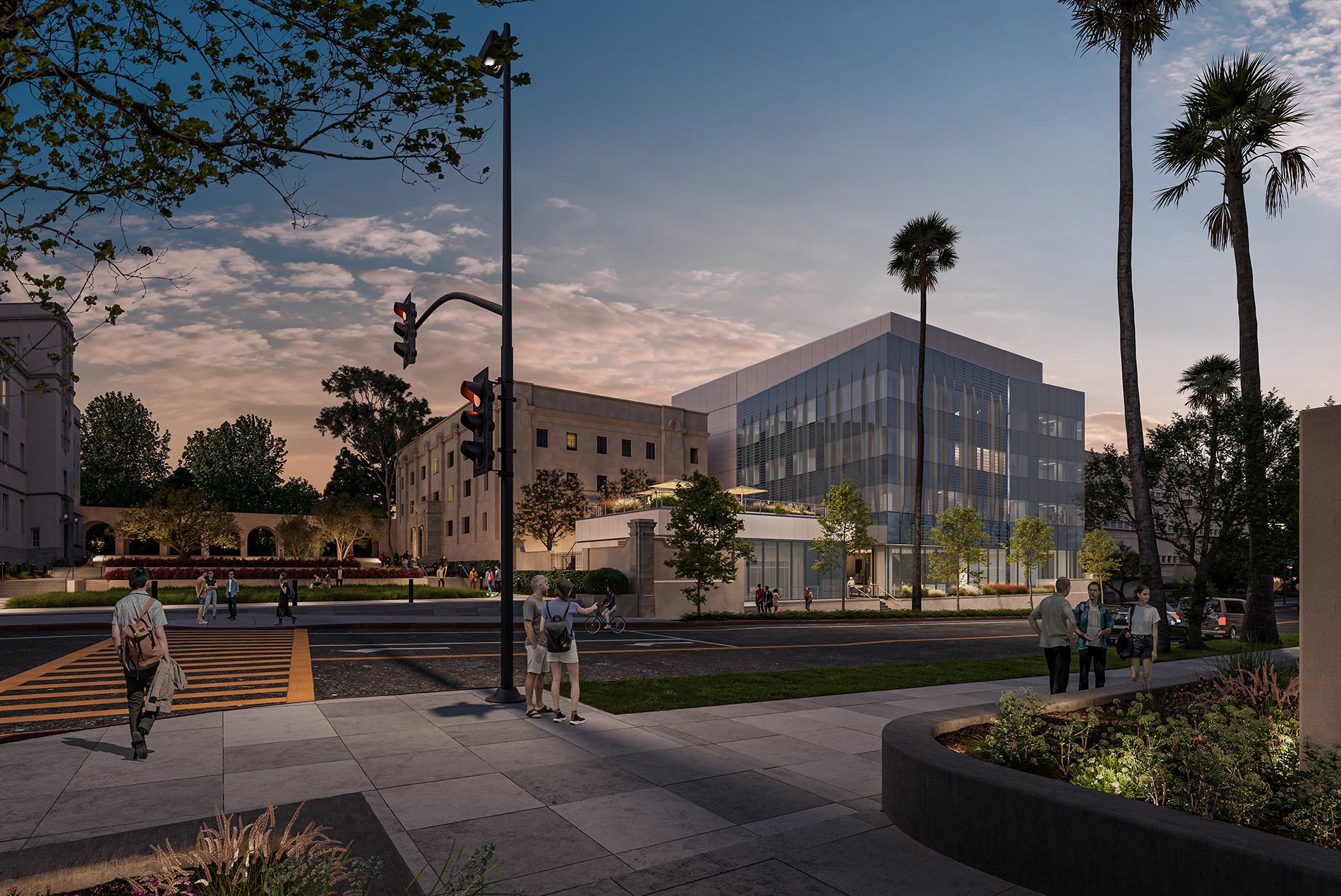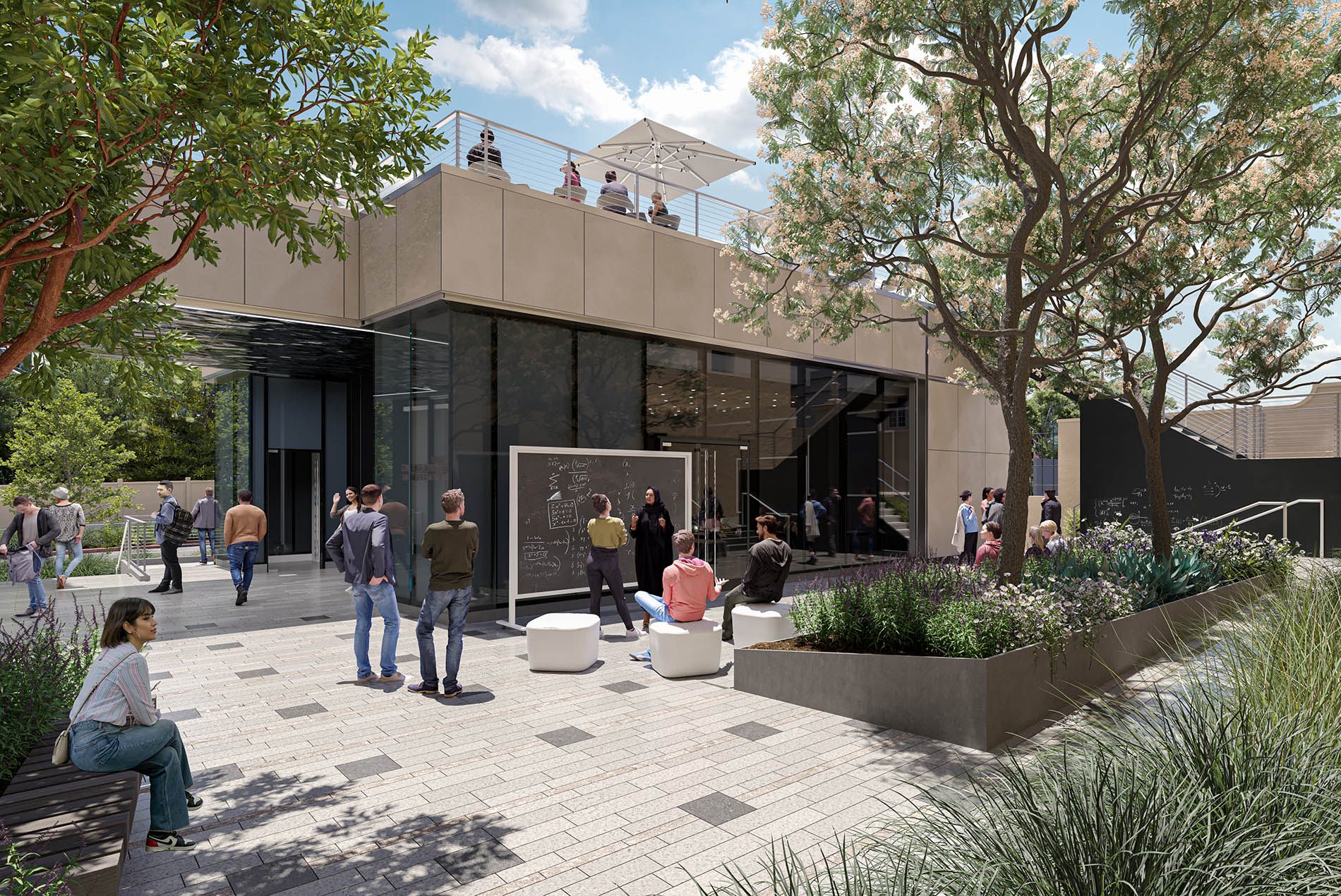Innovative subterranean design addresses historical constraints and precision lab requirements.
The Dr. Allen and Charlotte Ginsburg Center for Quantum Precision Measurement at Caltech will advance research in quantum physics, including complex quantum systems, gravitational wave detection, fundamental particle theory and specialized laser development. Quantum science itself inspired aesthetic design elements throughout the facility, including outdoor collaboration areas with paving patterns mimicking quantum circuits, blackboards integrated with seating, a rooftop terrace and gathering spaces that promote interdisciplinary interaction. Adaeze Cadet, design principal in HOK’s Los Angeles studio, is leading the design.
Recently featured in Tradeline, the 70,000-sq.-ft. facility is currently under construction and scheduled to open in summer 2026. HOK designed specialized underground laboratories located 28 feet below grade to meet the extraordinarily precise environmental requirements that quantum research demands. The building features seven specialized labs supported by a 3-foot contiguous slab to control vibration, with additional measures to minimize electromagnetic interference, control temperature within 0.1 degrees and maintain precise humidity levels—all while respecting the site’s historical constraints.
Excerpted from Tradeline:
“Since the historical restrictions stipulate that a structure’s height can be no taller than any adjacent building, we located the labs underground giving us the ability to go deeper rather than taller and providing for future flexibility,” says Jessica Ginther, senior associate and project manager for HOK, the architectural design firm for the project.
All labs are located 28 feet below grade with a 3-foot contiguous slab beneath the entire lab area to maximize vibration control. The facility—which will have significant power and data structure, including pathways for fiberoptics—will house seven labs and shelled space for future build-out.
“Using that slab thickness over the full length of a facility is very unusual,” says Leslie Ashor, director of Science + Technology for HOK. “More commonly, thicker slabs are added to only small sections of certain labs, but since research is changing at such a rapid pace, investing in the future frequently means building a little more robustness into the entire lab.”
“It’s a sensitive balance between designing an environment that is flexible enough to support the equipment needed now and in the near future, without over-designing or over-specifying utilities,” she says.
Ashor adds that quantum sciences always drive significant space performance requirements, which the Ginsburg Center will fulfill.
+
“Waterproofing any basement is standard practice, but because of the precision of these lab spaces, we are taking extra precautions to prevent any water exchange within the walls and slabs,” says Ginther. “To ensure that the humidity is maintained at a precise level, we are creating a water and vapor barrier from multiple layers of very thick plastic material that will be welded together and placed on all six sides of the subterranean level.”
Read the entire Tradeline article.

